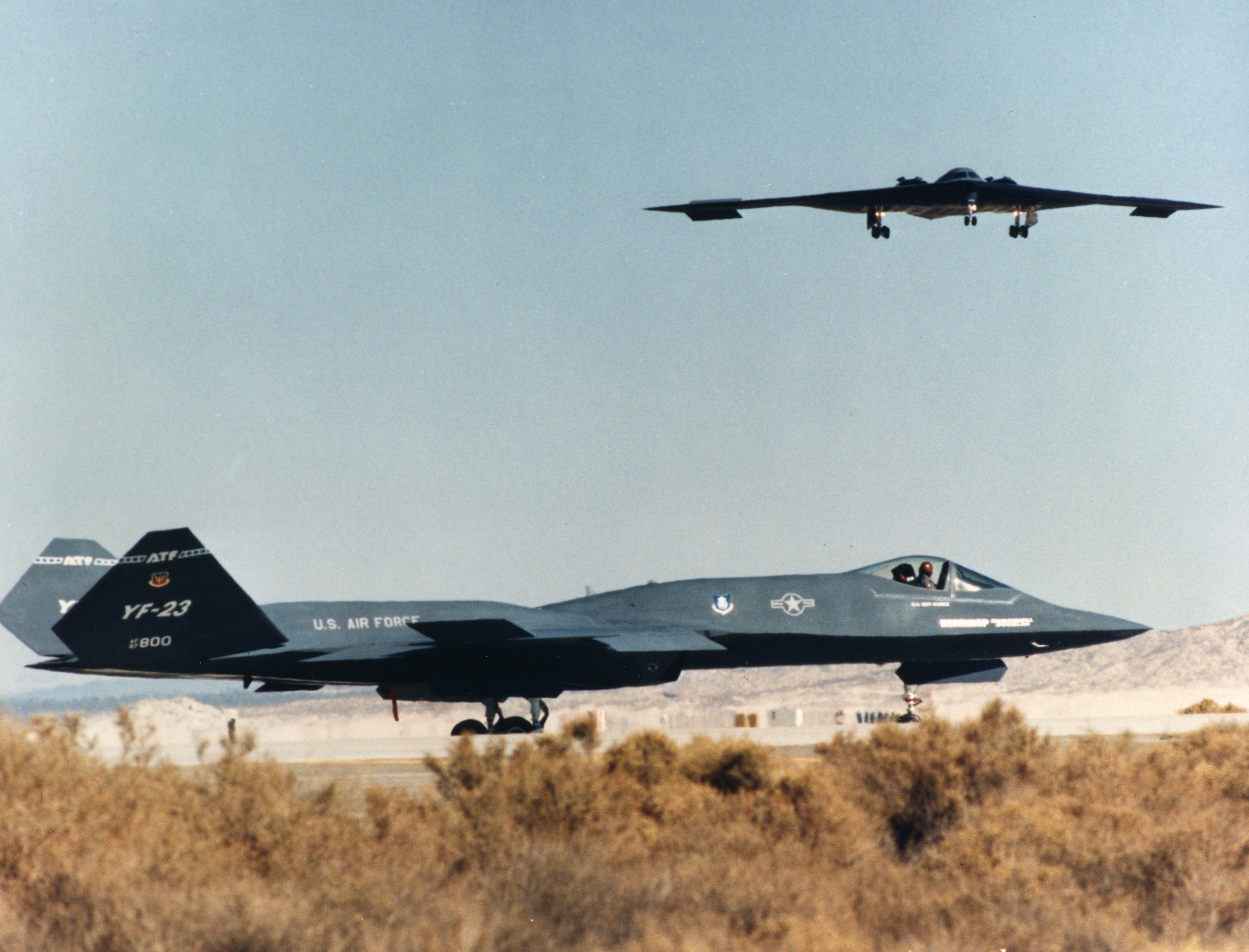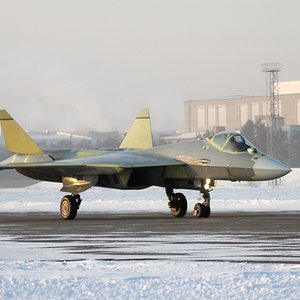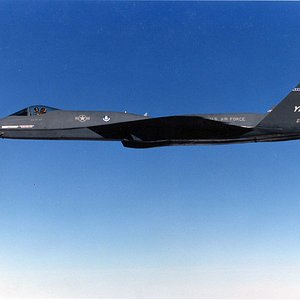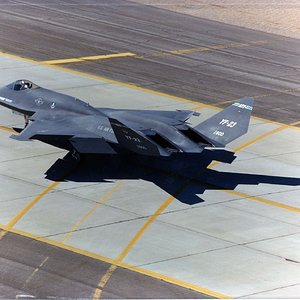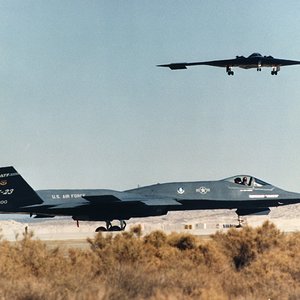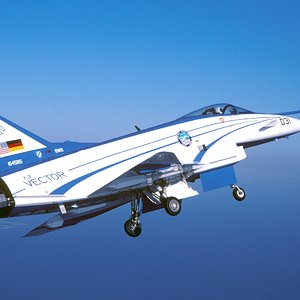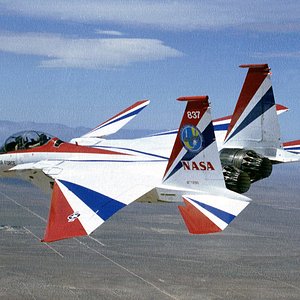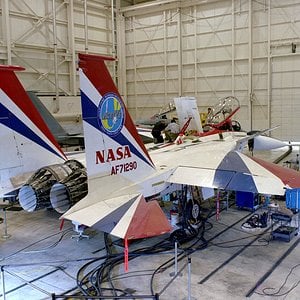Navigation
Install the app
How to install the app on iOS
Follow along with the video below to see how to install our site as a web app on your home screen.
Note: This feature may not be available in some browsers.
More options
You are using an out of date browser. It may not display this or other websites correctly.
You should upgrade or use an alternative browser.
You should upgrade or use an alternative browser.
Development
American reconnaissance satellites first spotted the advanced Soviet Su-27 and MiG-29 fighter prototypes in 1978, which caused concern in the U.S. Both Soviet models were expected to reduce the maneuverability advantage of contemporary US fighter aircraft. In 1981, the USAF requested information from several aerospace companies on possible features for an Advanced Tactical Fighter (ATF) to replace the F-15 Eagle. After discussions with aerospace companies, the USAF made air to air combat the primary role for the ATF. The ATF was to take advantage of emerging technologies, including composite materials, lightweight alloys, advanced flight-control systems, more powerful propulsion systems, and stealth technology. In October 1985, the USAF issued a request for proposal (RFP) to several aircraft manufacturers. The RFP was modified in May 1986 to include evaluation of prototypes from the two finalists. At the same time, the U.S. Navy, under the Navalized Advanced Tactical Fighter (NATF) program, announced that it would use a derivative of the ATF winner to replace its F-14 Tomcat. The NATF program called for procurement of 546 aircraft along with the USAF's planned procurement of 750 aircraft.
Top view of the YF-23, showing the trapezoidal wings and separation between the forward fuselage and engine nacelles
In July 1986, proposals were submitted by Lockheed, Boeing, General Dynamics, McDonnell Douglas, Northrop, Grumman and Rockwell. The latter two dropped out of competition shortly thereafter.[6] Following proposal submissions, Lockheed, Boeing, and General Dynamics formed a team to develop whichever of their proposed designs was selected, if any. Northrop and McDonnell Douglas formed a team with a similar agreement.[7] The Lockheed and Northrop proposals were selected as finalists on 31 October 1986. Both teams were given 50 months to build and flight-test their prototypes, and they were successful, producing the Lockheed YF-22 and the Northrop YF-23.[8]
The YF-23 was designed to meet USAF requirements for survivability, supercruise, stealth, and ease of maintenance.[9] Supercruise requirements called for prolonged supersonic flight without the use of afterburners.[10] Northrop drew on its experience with the B-2 Spirit and F/A-18 Hornet to reduce the model's susceptibility to radar and infrared detection.[11] The USAF initially required the aircraft to land and stop within 2,000 feet (610 m), which meant the use of thrust reversers on their engines. In 1987, the USAF changed the runway length requirement to 3,000 feet (914 m), so thrust reversers were no longer needed. This allowed the aircraft to have smaller engine nacelle housings. The nacelles were not downsized on the prototypes.[12][13]
The first YF-23 (serial number 87-0800), Prototype Air Vehicle 1 (PAV-1), was rolled out on 22 June 1990;[14] PAV-1 took its 50-minute maiden flight on 27 August with Alfred "Paul" Metz at the controls.[15] The second YF-23 (serial number 87-0801, PAV-2) made its first flight on 26 October, piloted by Jim Sandberg.[16] The first YF-23 was painted charcoal gray and was nicknamed "Spider"[16] and "Black Widow II", the latter after the Northrop P-61 Black Widow of World War II. It briefly had a red hourglass marking resembling the marking on the underside of the black widow spider before Northrop management had it removed.][N 1] The second prototype was painted in two shades of gray and nicknamed "Gray Ghost"
American reconnaissance satellites first spotted the advanced Soviet Su-27 and MiG-29 fighter prototypes in 1978, which caused concern in the U.S. Both Soviet models were expected to reduce the maneuverability advantage of contemporary US fighter aircraft. In 1981, the USAF requested information from several aerospace companies on possible features for an Advanced Tactical Fighter (ATF) to replace the F-15 Eagle. After discussions with aerospace companies, the USAF made air to air combat the primary role for the ATF. The ATF was to take advantage of emerging technologies, including composite materials, lightweight alloys, advanced flight-control systems, more powerful propulsion systems, and stealth technology. In October 1985, the USAF issued a request for proposal (RFP) to several aircraft manufacturers. The RFP was modified in May 1986 to include evaluation of prototypes from the two finalists. At the same time, the U.S. Navy, under the Navalized Advanced Tactical Fighter (NATF) program, announced that it would use a derivative of the ATF winner to replace its F-14 Tomcat. The NATF program called for procurement of 546 aircraft along with the USAF's planned procurement of 750 aircraft.
Top view of the YF-23, showing the trapezoidal wings and separation between the forward fuselage and engine nacelles
In July 1986, proposals were submitted by Lockheed, Boeing, General Dynamics, McDonnell Douglas, Northrop, Grumman and Rockwell. The latter two dropped out of competition shortly thereafter.[6] Following proposal submissions, Lockheed, Boeing, and General Dynamics formed a team to develop whichever of their proposed designs was selected, if any. Northrop and McDonnell Douglas formed a team with a similar agreement.[7] The Lockheed and Northrop proposals were selected as finalists on 31 October 1986. Both teams were given 50 months to build and flight-test their prototypes, and they were successful, producing the Lockheed YF-22 and the Northrop YF-23.[8]
The YF-23 was designed to meet USAF requirements for survivability, supercruise, stealth, and ease of maintenance.[9] Supercruise requirements called for prolonged supersonic flight without the use of afterburners.[10] Northrop drew on its experience with the B-2 Spirit and F/A-18 Hornet to reduce the model's susceptibility to radar and infrared detection.[11] The USAF initially required the aircraft to land and stop within 2,000 feet (610 m), which meant the use of thrust reversers on their engines. In 1987, the USAF changed the runway length requirement to 3,000 feet (914 m), so thrust reversers were no longer needed. This allowed the aircraft to have smaller engine nacelle housings. The nacelles were not downsized on the prototypes.[12][13]
The first YF-23 (serial number 87-0800), Prototype Air Vehicle 1 (PAV-1), was rolled out on 22 June 1990;[14] PAV-1 took its 50-minute maiden flight on 27 August with Alfred "Paul" Metz at the controls.[15] The second YF-23 (serial number 87-0801, PAV-2) made its first flight on 26 October, piloted by Jim Sandberg.[16] The first YF-23 was painted charcoal gray and was nicknamed "Spider"[16] and "Black Widow II", the latter after the Northrop P-61 Black Widow of World War II. It briefly had a red hourglass marking resembling the marking on the underside of the black widow spider before Northrop management had it removed.][N 1] The second prototype was painted in two shades of gray and nicknamed "Gray Ghost"

